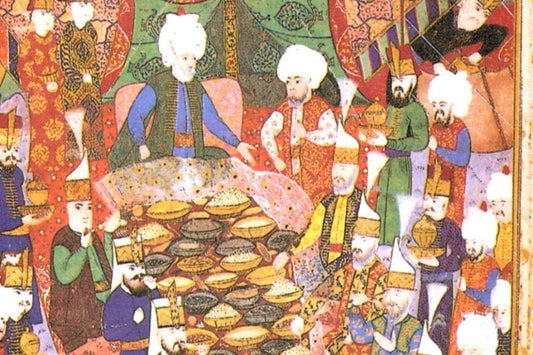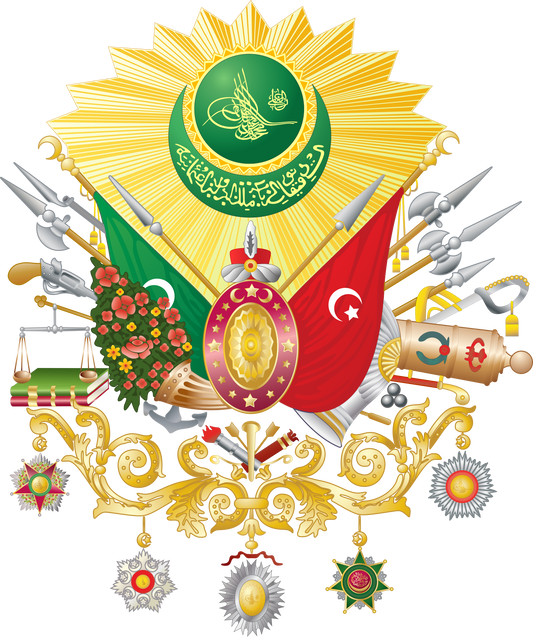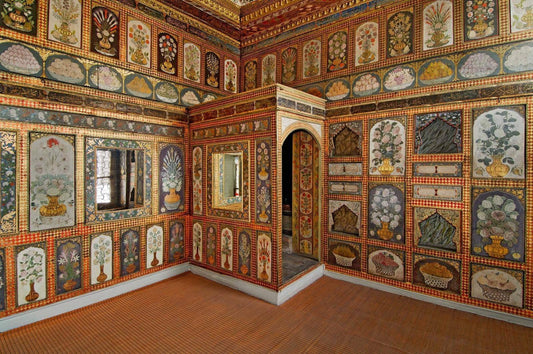Stylized vegetal decoration, consisting of thin, flexible curves of branches tipped with rumi and palmettes, varies depending on the era in which it was created and the style of its cultural environment. However, its use across a vast geography for centuries has made it synonymous with Islamic art. While seemingly complex at first glance, these symmetrically arranged vegetal curves, covering the surface in various arrangements and intertwining in unidirectional, straight, curvilinear, or spiral strips, have enabled the implementation of the most intricate designs.
Plant Decoration Motifs and Their Meanings
1. Rumi Motif
The rumi motif, which holds a special place in this decorative style, has various theories as having a vegetal or zoomorphic origin, or even as deriving from the wings of birds and mythical animals in Central Asian art. The motif and compositional characteristics developed in Samarra in the 9th century became prevalent throughout Islamic countries and were fondly used in Karakhanid, Ghaznavid, Fatimid, Abbasid, Andalusian Umayyad, and Mamluk art, especially in Anatolia, where it takes its name. Rumi motifs, the finest examples of which can be seen in Anatolian Seljuk stone and woodwork, are often combined with lotus and palmette motifs. To explore our tiles featuring rumi motifs, please visit the Rumi motif tile products page.
2. Palmette and Lotus Motifs
Palmetto and lotus motifs, often used in conjunction with rumi motifs, enrich the composition. These motifs are frequently seen in Seljuk and Ottoman architecture, as well as in stone and wood carving. They play an important role as both symbolic and aesthetic elements. To explore our lotus motif tile products, please visit the Lotus motif tile products page.
Rumi Motif from Historical Perspective
From the early period of Ottoman art onward, masterful designs of abstract floral ornamentation are evident. By the 16th century, rumi and palmettes were used in various arrangements, both alone and in combination with hatayi, reed leaves, and clouds, but they were not depicted on the same stem. This characteristic demonstrates that rumi was considered an independent element. In both its simple form and its highly detailed drawings, it has consistently maintained its place among the traditional motifs of classical Ottoman art.
Modern Use of the Rumi Motif
Rumi motifs are used today not only in traditional arts such as tile, wood carving, and stonework, but also in modern graphic design, fashion, and interior architecture. Their aesthetic appeal, consistent with minimalism, makes them a popular choice for modern designers in decorative elements.
Motifs Inspiring the Future from Tradition
Traditional floral decoration, an integral part of Islamic art, continues to influence both past and present. Enriched with motifs such as rumi, palmettes, and lotuses, this type of decoration is not only a decorative element but also a form of cultural expression. This tradition, which carries traces of the past into today's designs, continues to inspire contemporary designs.




